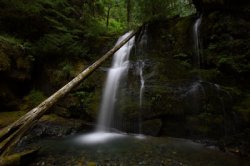Hi everyone,
First off, I'm a novice, so go easy on me!
I have a Nikon D90 and really want to get into taking long exposure pictures. First off, Here's the lenses I have:
AF-S Nikkor 18-105mm1:3.5-1.6 G
AF-S Nikkor 70-330mm 1:4.5-5.6 G
So...from what I've read, there is no possible way to get long exposures in sun light with these lenses. Am I right? I've tried putting the ISO as low as possible, and of course, the aperture closed as much as possible, but no good.
So..If i'm right with the above reasoning, what lens could you suggest for outdoor long exposures, in a fair amount of sunlight?--I'm a student, so I'm not exactly able to buy the best on the market. I just need something that will get the job done.
Thanks
First off, I'm a novice, so go easy on me!
I have a Nikon D90 and really want to get into taking long exposure pictures. First off, Here's the lenses I have:
AF-S Nikkor 18-105mm1:3.5-1.6 G
AF-S Nikkor 70-330mm 1:4.5-5.6 G
So...from what I've read, there is no possible way to get long exposures in sun light with these lenses. Am I right? I've tried putting the ISO as low as possible, and of course, the aperture closed as much as possible, but no good.
So..If i'm right with the above reasoning, what lens could you suggest for outdoor long exposures, in a fair amount of sunlight?--I'm a student, so I'm not exactly able to buy the best on the market. I just need something that will get the job done.
Thanks


